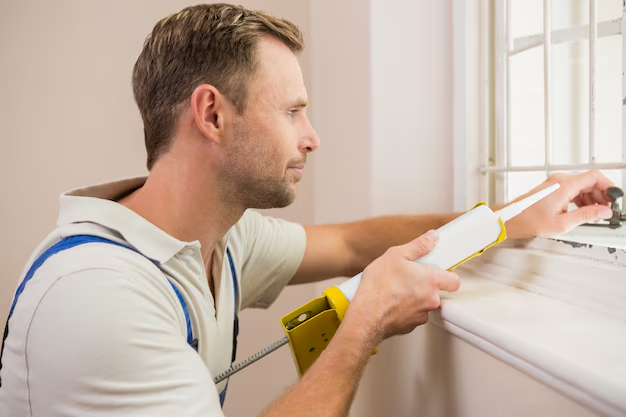How to Effectively Replace the Seal on a Refrigerator
Does your refrigerator door not close as snugly as it used to? Has your energy bill seen an unexplained rise? The solution might be simpler than you think. Replacing the seal, also known as the gasket, on your refrigerator can make your appliance more energy-efficient and prevent spoiled food. Let’s explore how you can tackle this project with confidence.
Understanding the Importance of a Refrigerator Seal
Why Is a Refrigerator Seal Important?
A refrigerator seal ensures that the cool air stays inside and the warm air remains outside. A faulty seal can lead to:
- Increased energy consumption: The refrigerator works harder to maintain the desired temperature, leading to higher energy bills.
- Spoiled food: Inconsistent temperatures can cause food to spoil faster.
- Ice buildup: Warm air entering the freezer can cause excess moisture and ice.
Signs Your Refrigerator Seal Needs Replacement
Before dismantling anything, confirm whether your seal truly needs replacement. Indicators can include:
- The refrigerator door doesn’t close tightly.
- You notice condensation or frost buildup along the seal.
- There is noticeable wear or tearing in the seal.
- A simple dollar bill test: Close a dollar bill in the door, and if it slips out easily when pulling, the seal may be failing.
Preparing for the Replacement
Gathering Necessary Tools and Materials
To effectively replace your fridge seal, you’ll need:
- A replacement seal that matches the make and model of your refrigerator.
- A screwdriver (usually Phillips-head).
- Warm, soapy water.
- A towel or cloth for cleaning.
- Petroleum jelly.
Removing the Old Seal
Unplug the Refrigerator: Safety first! Ensure your appliance is unplugged before beginning.
Loosen the Seal: Depending on your refrigerator model, the seal might be held by screws or a groove. Check the grooves and screws around the inner door liner.
Remove the Screws: If there are screws, loosen them slightly. You don’t need to remove them completely but enough to slip the old seal out.
Peel Away the Old Seal: Gently pull the old seal away from the fridge door. If necessary, warm the seal with a hair dryer to make it more pliable.
Installing the New Seal
Step-by-Step Installation
Clean the Surface: Before installing the new seal, clean the area where the old seal sat with a cloth and soapy water.
Align the New Seal: Begin at one corner of the door. Press the new seal into place, ensuring it fits snugly into the groove or beneath the bracket of screws, making sure not to stretch the seal.
Secure the Seal: For screw-type seals, re-tighten the screws gradually, moving around the door to ensure even attachment. For groove-type seals, press firmly to ensure it sits in place.
Check for Gaps: Inspect for any gaps between the door and the seal. Ensuring an even fit is critical for maintaining energy efficiency.
Lubricate if Necessary: Apply a thin film of petroleum jelly around the perimeter of the seal. This can enhance the airtightness and help the door close smoothly.
Testing the New Seal
- Conduct the dollar bill test again to ensure that it's now tightly secured.
- Plug in the refrigerator and monitor for a few days to observe improvements.
Maintaining Your Refrigerator Seal
Tips for Longevity
Regular Cleaning: Regularly clean the seal with mild detergent and water. This prevents dirt buildup, which can break down the rubber over time.
Avoid Excessive Force: Be gentle when opening and closing the refrigerator door to minimize the wear on the seal.
Check Regularly: Conduct periodic checks using the dollar test method to ensure optimal functionality.
Addressing Common Challenges
Troubleshooting Installation Issues
Seal Won’t Stay in Place: Ensure that grooves are properly aligned and not distorted. Applying slight heat can help make the rubber more pliable.
Seal Appears Too Large or Small: Double-check the model number and specifications before purchasing a replacement.
Summary of Key Steps 🚪
- Recognize signs of a failing seal, including inconsistent temperatures and high energy costs.
- Gather tools: Replacement seal, screwdriver, soapy water, cloth, petroleum jelly.
- Remove old seal with care, unscrewing or un-grooving as necessary.
- Install new seal using gradual approach—align it, secure it, and check alignment.
- Conduct a test to ensure proper installation, like the dollar bill test.
- Regular maintenance and cleaning can prolong the seal's life.
🌟 DIY Tip: Always double-check compatibility when purchasing a replacement seal to avoid sizing issues. Proper installation not only boosts efficiency but also extends the lifespan of your appliance!
Replacing a refrigerator seal isn’t just a task reserved for professionals. With a little time and patience, you can enhance the efficiency of your refrigerator, maintain a consistent cooling environment, and save on costs—all while gaining the satisfaction of a completed DIY project. Every successful repair empowers you to handle the next household challenge with renewed confidence.
